- Work Hard
- 29th May 2021
- 2k Views
- 0
- 8 minutes
Meet the one-man design studio turning salvaged wood into one-of-a-kind homeware
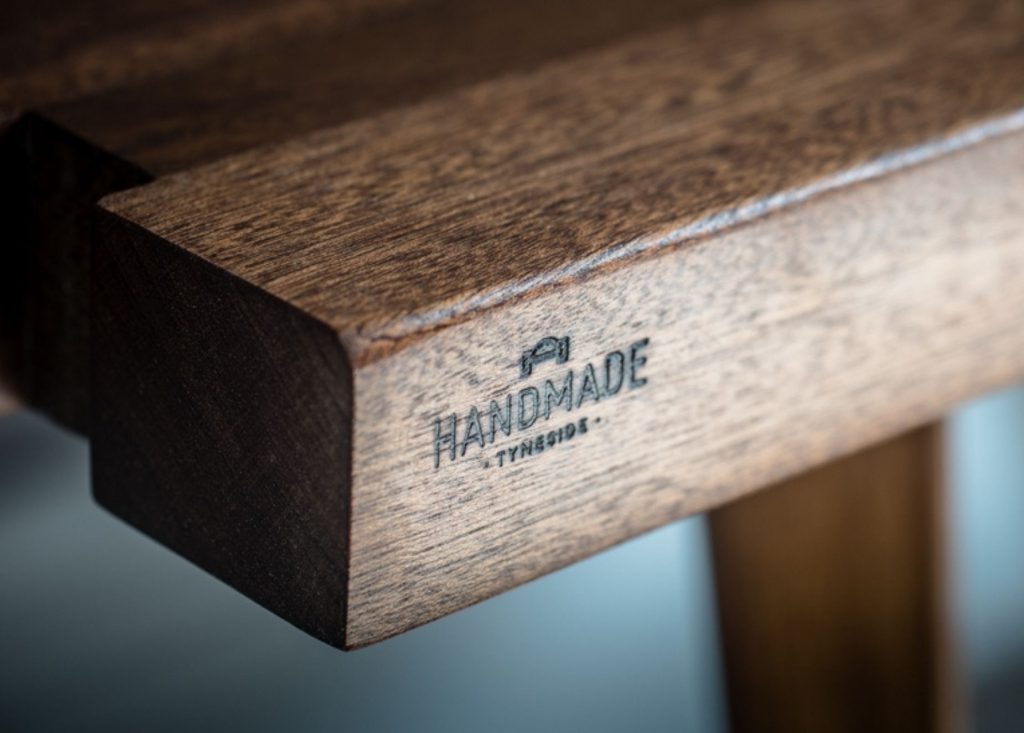
- Advertisement Feature
Handmade Tyneside promise to give you homeware with heritage – and a hell of a lot of heart
It wasn’t until Tyneside local Jamie Rothwell found that he didn’t have room enough to swing a cat in his backyard that he decided to open up his own business.
The cause of his hoard? Wood, and lots of it. Salvaged from scrap yards and reclaimed from renovation projects all around the North East, Jamie is determined to never put a good wood down – and, with the help of a little ingenuity and creativity in bucketloads, he’s now dedicated his career to finding new ways of repurposing his findings so that they can happily go on to a new home.
From age-old dancefloors of the derelict nightclubs our parents or, even, grandparents once threw a few shapes on, to the historical doors of a church that date back to the 1800s; aged barrels, bread crates, old fishing trawlers or mahogany cladding – Jamie finds an innovative new use for them all.
The result? Sustainable furniture, décor and homeware with bags of character, created by hand and each entirely unique. Now that sounds like a bit of us!
We caught up with Jamie to discover where he sources his material, how the heritage of wood can inspire future creations, and just what a Kentucky Stick Chair actually is…
What’s Handmade Tyneside all about?
It’s about giving old wood a new life. I handmake everything using reclaimed wood – which is sourced locally – so that every piece is slightly different and has its own story.
I make a small range of furniture, lighting and homeware, which changes all the time with demand and with the wood I’ve been able to source.
When did you first realise you had a love for creating things using wood?
I’ve always just liked ‘making’ – whether it’s beer, bread or furniture, I love the process of figuring out how to do something. When we moved into our house, there were things we needed… so I just started making things in our yard! Messing about with pallets I’d rescued from the street, making bits of furniture and figuring out storage solutions.
In the summer of 2015, one of our neighbours – who’d been watching the mess I’d been making! – came over for a chat and I ended up making him a bench for his garden. Then someone else wanted some planters, then another wanted a dining table, and it all just grew from there. What I like about working with wood is its character: the different grains, the colours, you can see the life it’s had. Using reclaimed or salvaged wood makes it even more unique.
What gave you the final push to turn that passion into a business?
It was a combination of the growing list of people who were recommending me and requesting bespoke pieces, and the fact that our yard was getting out of hand with the wood I was salvaging!
I’d ended up chatting to a foreman on a site in Gateshead. They were stripping out a working men’s club and turning it into a house. I asked if I could take some of the wood off their hands and, ultimately, ended up with what was the old dancefloor and the bar top. The wood was at least 50 years old and I had ideas about what I’d like to make with it. I still have some of the wood from the bar top now – it’s the wood I use to make one of my best-selling pieces, a bottle opener.
A bottle opener made from the bar of a working men’s club… it’s those kinds of stories that people love. Lots of the people who buy from me do so not just because they like the pieces I make, but because they have a connection or a memory with where the wood has come from. I’m always talking to people whose grandad used to drink in that working men’s club.
How and where do you source the reclaimed or salvaged wood you use?
When I first started, I would always be popping into building sites or renovation projects, just like that working men’s club, asking if I could buy the wood they didn’t want. Often it just goes to scrap and some of the wood is still incredible in quality. I’ve got church doors from the 1800s, beams from 1910, wooden-lift surrounds from the 1950s… a lot of it is wood that would just be too expensive to buy now or, in some cases, is rarely available.
Since I got my workshop in 2016, I’ve got to know a lot of the makers around there – we work together on projects sometimes, so they’re always on the look-out for wood I can use. Over the years, people have come to know what I’m looking for so I’ll sometimes get a drop off from a renovation, too. Best of all, though, is when people who have bought something from me come back with a donation.
Do any of these customer donations particularly stick in your mind?
A couple of years ago, an elderly couple bought some Christmas gifts from Handmade Tyneside and, in the following Spring, they got in touch to offer some mahogany tabletops. They dropped them off – bringing with them a book on the heritage of the North East, showing me exactly where the wood came from. They were from another working men’s club, this time one on Sheriff’s Hill in Gateshead. Her dad had kept them after the club closed, because it was actually his dad who had made them when it first opened.
Amazing! So what do you think the wood’s provenance lends to the products you go on to create?
I think it makes it feel like it’s already part of your life. Even if people are buying from Handmade Tyneside for the first time, and they’re buying something that is ‘new’ to them, the previous life of the wood means they’re already emotionally connected to it. Especially if that story crosses over with their own. To know that you’re using a bottle opener made from the bar that your grandad would have sat at every Friday afternoon keeps a connection with your past, your memories and your family in a whole new way. This thing that you hold in your hands now has existed in a different place, at a different time and in a different form – that’s amazing. That’s the beauty of anything second-hand.
Where do you find your inspiration for each piece?
If I can, I like to try and make something that’s connected in some way to the original purpose of the wood. Like the bottle openers from the bar top. Often, I’ll have lots of ideas and sketches about what I’d like to make, but it’s a case of waiting for the ‘right’ wood to come along!
Sometimes, people come to me with an idea of what they’re looking for and that can develop into something that becomes part of the range. And, other times, we try new stuff out because we need it in our own house!
It has to be quite fluid, because the source of wood is finite. Even using the same design with different wood makes a completely different product.
What has been one of your favourite pieces to create so far?
I think I would say the Stick Chair. It’s a foldable garden chair, made from strips of wood. It’s often called the Kentucky Stick Chair. It’s so precise and also quite therapeutic to make, because quite a lot of the process is cutting, sanding and prepping many, many identically-sized pieces of wood.
And is there something you’d really like to create in the future that you haven’t got round to working on just yet?
I like the challenge of supersizing, or making things that you would assume simply wouldn’t work in wood. So, for example, I’ve made an armchair. I’d quite like to make a sofa!
When you’re not working, where in the North East are you most likely to be?
By the River Brew Co. for drinks, Vegano at the Quayside market for the best not-a-donner kebab you’ll ever find, the Honest Shop at Redcar Palace for locally-made and locally-grown products, and pretty much anywhere we can take our dog, Lancelot!


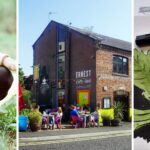
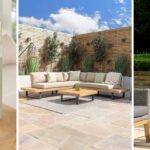



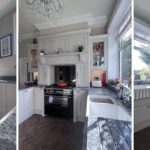

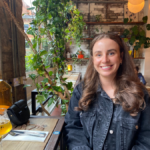
Comments